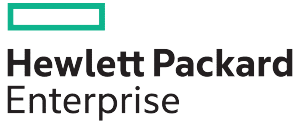This blog is an excerpt from GovLoop’s recent industry perspective, Application Transformation: Accelerating the New Face of Government. Download the full perspective here.
Simply put, updating applications and moving to more agile technologies saves agencies money in the long run. Many public organizations operate under an 80-20 spending model: They put roughly 80 percent of their IT budget toward maintaining old systems, and only devote 20 percent to newer innovations.
Taking the plunge on application modernization, however, will change that spending ratio and make more funds available for future investments. “The benefit of modernization,” said Stu Hammer, Director of Application Services and Program Excellence for U.S. Public Sector at Hewlett-Packard Enterprise, “is that then an agency can free that money up and flip it around so they can see that maybe 40 percent of that could be spent on sustainment, and 60 percent on innovation.”
Not only does modernizing your agency’s applications mean spending less on costly, outdated systems, it also leads to a more streamlined and agile portfolio. Modernization cuts the clutter, so to speak, and eliminates unneeded outdated applications, enabling changes and updates to be made much more rapidly and effectively throughout the enterprise.
“This results in agility: driving to a much more agile environment to be able to actively make technological changes, address the security issues and address the agency’s needs for quick changes,” said Hammer.
How can an agency get started on the modernization process? One piece of advice from Hammer is that agencies need a roadmap to understand the millions of lines of code in these antiquated applications. Many agencies begin the process too rapidly, without thinking critically about the long-term effects on the entire IT enterprise. “They’ll jump into [modernizing an application] without knowing the impact that it might have on downstream applications or on the total cost of ownership,” said Hammer.
Often, agencies are eager to make a change, and do so overnight, which can lead to major, costly adjustments to the modernization process, or an outright halt. This wastes time as well as critical funds and resources, and is especially detrimental to organizations with limited budgets and resources that need to get the biggest bang for their buck.
One way to stop wasting resources is to carefully plan the modernization process and be selective on which applications to modernize first. It is important to take time to plan out the process and carefully assess the implications of prioritizing certain applications over others. If properly scripted, application modernization can end up saving an agency millions of dollars and relieve staff burdens of maintaining outdated systems.
Additionally, many agency IT leaders don’t know where to start. Many public organizations have thousands of applications. Not only is this quantity daunting, but these applications are often scattered throughout the enterprise, housed on a mix of physical and virtualized servers.
This sort of “IT sprawl” makes modernization much more techni- cally difficult to manage, and security risks more difficult to mitigate. As security is one of the top concerns for public agencies, it is often a barrier to technological change.
“Their infrastructure is all over the place from a physical and virtual perspective,” said Hammer. “Agencies then don’t want to change because they are afraid of the security threats…and if they did make that change, what would that do to their security?”
In order to tackle overwhelming IT sprawl and alleviate security risks, agencies should start small with a few applications. Take stock of which applications are critical to organizational missions and which ones end users use most. Then, assess how altering or re-platforming these selected applications may affect the functionality of other applications, security protocols and overall organizational workflow.
In addition to questions about how modernizing applications will affect security, many organizations are wary of the necessary change management efforts that accompany technological change. Modernizing applications will ultimately alter how both staff members and constituents interact with the agency.
In some cases, there may be some resistance from staff members on instigating radical changes. Public organizations should make a plan for how to train personnel and demonstrate how these changes will improve their day-to-day efficiency. In addition, it is important to ensure applications are continually updated and adapted to meet user needs.
Download the full perspective here.






Leave a Reply
You must be logged in to post a comment.